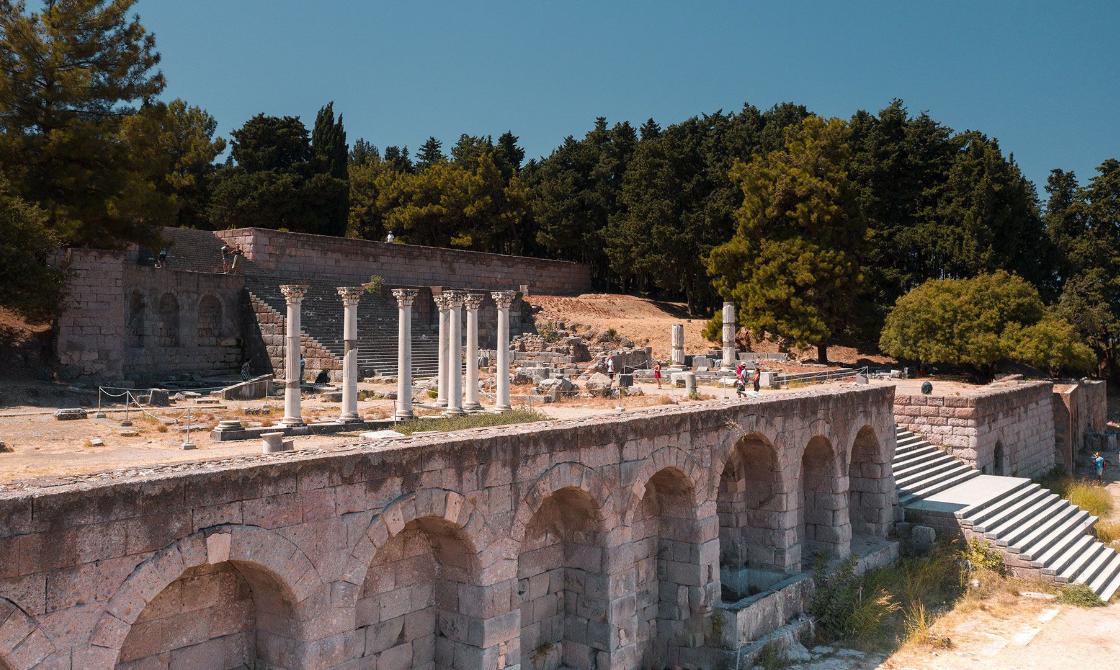
Kos History & Culture
Kos, an island rich in history and culture, boasts a captivating past that has shaped its identity into what it is today. Here's an overview of the history and culture of Kos:
Ancient History:
1. Greek Mythology: According to Greek mythology, Kos was named after the daughter of Merops, the mythical king of the island. The island is also associated with the legendary physician Hippocrates, known as the "Father of Medicine," who was born here around 460 BCE.
2. Ancient Settlements: Kos has been inhabited since prehistoric times, with evidence of settlements dating back to the Neolithic period. The island flourished during the Minoan and Mycenaean periods and was later inhabited by Dorians, Phoenicians, and Persians.
3. Hellenistic Period: During the Hellenistic period, Kos became a center of culture and learning. The renowned physician Hippocrates founded the first medical school on the island, where he taught his revolutionary theories of medicine and healing.
Roman and Byzantine Rule:
1. Roman Conquest: Kos came under Roman rule in 130 BCE after the conquests of the Roman Republic. The Romans brought prosperity to the island, constructing public buildings, temples, and baths.
2. Byzantine Era: Following the division of the Roman Empire, Kos became part of the Byzantine Empire. The island played a strategic role in the Byzantine defense system against Arab invasions in the 7th century.
Medieval and Ottoman Periods:
1. Knights of St. John: In the early medieval period, Kos was ruled by the Byzantine Empire and later by the Knights Hospitaller of the Order of St. John. The Knights fortified the island and built the Castle of the Knights in Kos Town.
2. Ottoman Rule: Kos fell under Ottoman rule in 1522 after the Knights Hospitaller surrendered to the Ottomans. The Ottomans left a lasting influence on the island's architecture, culture, and cuisine.
Modern History:
1. Italian Occupation: Kos was occupied by Italy during the Italo-Turkish War in 1912 and remained under Italian control until World War II. The Italians implemented modernization projects on the island, including infrastructure improvements and urban planning.
2. World War II and Liberation: During World War II, Kos was occupied by Axis forces. The island was liberated by British forces in 1945, leading to its incorporation into the newly established Greek state.
Culture and Heritage:
1. Archaeological Sites: Kos is home to numerous archaeological sites, including the Ancient Agora, Asklepeion of Kos, and Castle of the Knights. These sites offer insights into the island's ancient history and architectural heritage.
2. Cultural Traditions: Kos has a rich cultural heritage, with traditional music, dance, and festivals celebrated throughout the year. Visitors can experience local customs and rituals, such as religious festivals and village feasts.
3. Cuisine: The culinary tradition of Kos reflects its diverse history, with influences from Greek, Italian, and Ottoman cuisines. Local specialties include seafood, katimeria, marmarites, sweet tomato in syrop, mezes (appetizers), souvlaki, and baklava.
4. Arts and Crafts: Kos has a thriving arts and crafts scene, with local artisans producing pottery, ceramics, textiles, and woodcarvings. Visitors can explore workshops and galleries showcasing traditional and contemporary artworks.
From its ancient origins to its modern-day vibrancy, Kos Island continues to enchant visitors with its fascinating history, vibrant culture, and timeless beauty.
---
